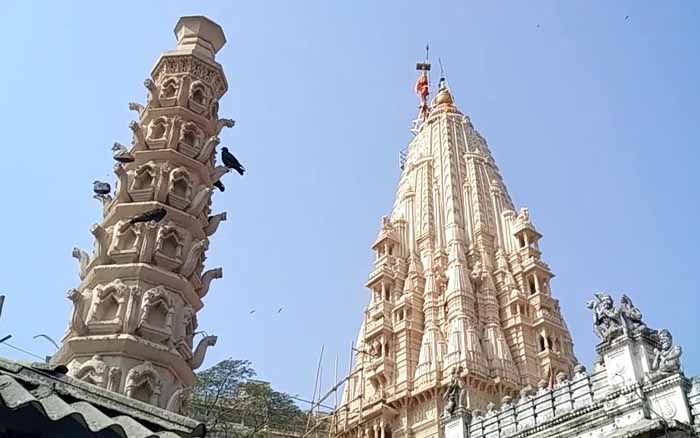Walkeshwar Temple

Information of Walkeshwar Temple (Baan Ganga Temple), Mumbai, Maharashtra
Walkeshwar temple of South Mumbai also known as the Baan Ganga Temple is one of the unique and ethnic religious places existing in the beautiful city of Mumbai. The highest point of the Malabar hill at the Banganga Road is the actual location of this exceptional temple. The temple of Walkeshwar was a dedication to the great Lord Shiva. A freshwater reservoir named as the Banganga tank is attached to this temple. Many followers and devotees visit this temple and take holy dips in this tank to purify themselves from unlawful activities.
Walkeshwar Temple Mythology & History
The mythological aspect behind the creation of this religious place was related to the legendary story of Ram-Sita. As told in the story, Ram's wife Sita was kidnapped by the demon king Ravana. So, Ram and his younger brother Lakshmana travelled from Ayodha to Lanka (present Srilanka) in pursuit of her. In between their long journey they had stopped here for a while. As suggested, Ram sent his brother Lakshmana in search of an idol of Lord Shiva to worship him for the sake of his wife's life. Unable to wait further for his brother Ram thought and established a Shiva linga out of sand and worship it. Hence, the name Valuka Iswar, a Sanskrit word was derived from it which means "God of Sand". It was also described as an avtar or a form of Lord Shiva. This is how the historic and religious temple of Walkeshwar was created.
Being, waited for a long time made Ram thirsty. So, he aimed an arrow towards the Ganges and brought it over here as there was no fresh water for drinking except the waters of sea. Hence, the reservoir of Banganga was also formed where "Ban" means arrow.
Walkeshwar Temple Religious Significance
The Walkeshwar temple is filled with devotees and visitors throughout the year which makes it one of the popular religious destinations in Mumbai. During full moon days (Purnima) and no moon days (Amavasya) of every month the temple becomes more active for the visitors. Other than local visitors, pirates of the Malabar Coast also visited the temple during the beginning of 16th century.
The Banganga water tank at present is the centre of attraction for the visitors. It stages a beautiful music festival named as Hindustani classical music festival. It gives the visitors a glimpse of the raw and traditional musical talent of India. World class performers like Sajan and Rajan Sharma, Shivkumar Sharma and many more take part in this famous festival. The whole festival including the live performances is conducted by the Maharashtra Tourism Development Corporation. Hence, all these festivals and worshipping made this sacred temple a must visit for people all over the world.
Walkeshwar Temple Architectural Significance
Though, the mythological stories about Lord Ram and the historical significance attract people towards it. But the prime centre of attraction of the temple lies in its unique style of architecture and the Banganga water tank attached to it. Lakshman Prabhu was given credit for creating this beautiful piece of construction and the water reservoir. He was a trusted minister of the Silahara dynasty. They ruled here for approximate 400 years from the beginning of the 8th century till the end of 12th century. Though, the place is surrounded by sea still the water in the reservoir is coming from hot springs under the ground, which is an astonishing feature of this temple.
Despite the fact that, the Portuguese massively destroyed the place during their reign in India it maintained its legacy. After that it was reconstructed several times and today it stands as one of the highly religious places of Maharashtra and of India.
- Andhra Pradesh Temples
- Assam Temples
- Bihar Temples
- New Delhi Temples
- Goa Temples
- Gujarat Temples
- Jammu and Kashmir Temples
- Karnataka Temples
- Kerala Temples
- Madhya Pradesh Temples
- Maharashtra Temples
- Odisha Temples
- Punjab Temples
- Rajasthan Temples
- Sikkim Temples
- Tamil Nadu Temples
- Telangana Temples
- Uttar Pradesh Temples
- Uttarakhand Temples
- West Bengal Temples